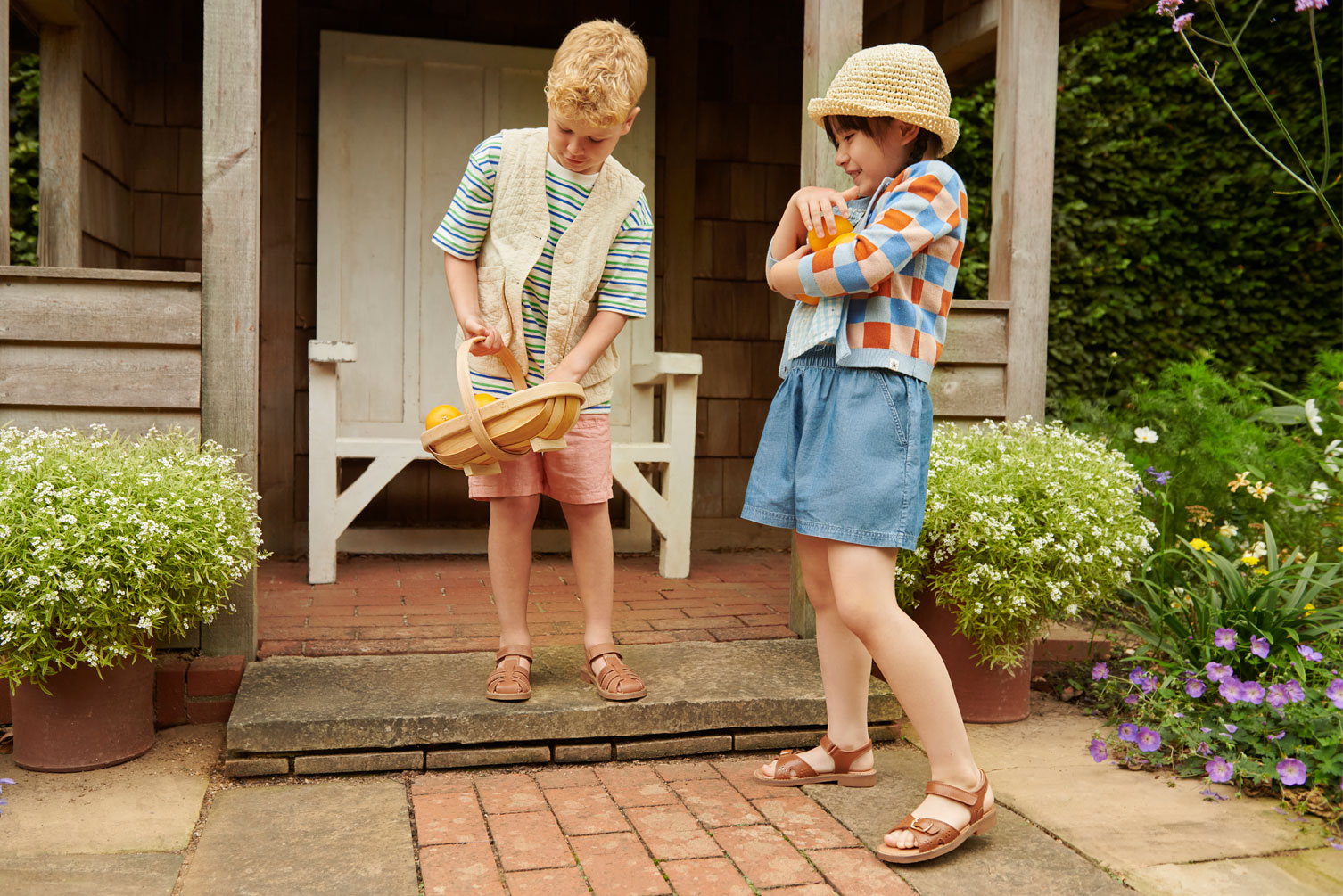
Flip flops and sandals are the mainstay of summer and an easy choice to cool warm feet when relaxing in the garden, or out and about. However, while these footwear styles suit a variety of outfits, they are really quite different in style and function, and aren’t suitable for the same occasions.
Here, we explain the key differences between flip flops and sandals and outline the important factors to consider when choosing summer footwear for a child’s feet. We also offer a word of caution: summer footwear can look ever so appealing on the shelf, but there can be some hidden risks to be aware of.
Flip flops have very little ‘upper’ part to the shoe and are held to the foot with a strap. In the traditional flip flop shape, the strap is in two parts connecting in a V shape over the arch of the foot towards a peg that holds the straps in place between the big toe and the second toe. The sole is usually made of a spongy material, which sometimes has a grip of rubber or leather for a little added protection.
A sandal, on the other hand, is a shoe that has a more robust upper than a flip flop, and material will cover the top of the foot and behind the heel. The upper will have shapes cut from it to create a stylish design and to provide plenty of ventilation. The sole unit of a sandal is more robust, as you would expect from a shoe and in the case of children’s shoes, the shoe will be fastened with a buckle or rip-tape to ensure it’s secure on the foot.
As a sandal is more robust in nature and designed on traditional shoe principles, it offers far better protection for a child’s foot than a flip flop. A flip flop can only offer a very low level of safety for a growing child who needs both support and protection and a shoe that grips their foot. You can find out more about flip flops and their functionality in our blog, ’Are flip flops bad for your feet?’
Here we look at the real benefits of choosing a sandal over a flip flop, focusing on child safety and developmental health.
An important factor for children’s footwear is that it must support and enable the child without the child being impeded by the shoe. The footwear must offer the right protection for the child’s foot, from the sole unit shielding the foot from sharp objects below, to being shaped to offer the right support to the developing arches, ligaments and cartilage. Here are some critical features a sandal provides which a flip flop doesn’t.
The three arches that make up the foot - medial, lateral and transverse - play a vital role in balance, shock absorption and stability. During childhood, the arches of the foot go through crucial developmental processes to form and strengthen gradually. In babies, the arches are mostly flat, while by toddlerhood, they grow more evident to provide stability and support for mobility. The arches continue developing as children grow up, reaching peak development at around the age of six .
It is vital a child wears shoes with proper arch support to support developing feet and ensure the very best care is maintained at every stage. Sandals with effective sole units will protect the arch development, something flip flops are not capable of .
It is important that the sole unit is highly flexible and strong. This will protect the foot from the ground beneath it, while also offering the correct level of sensory feedback to the brain for it to enable healthy physical development. The base of a flip flop is traditionally made from flexible foam and cannot provide the correct protection from jagged terrain.
Not only can stones puncture the foam, but the minimal upper means that when a flip flop faces challenging terrain, it can easily slip from underneath the foot and affect the tendons that are trying to keep all the complex systems of the foot operating effectively.
Around the same time that a child starts to walk, they also start to get independent. Wanting to search out new experiences and enjoying the speed at which they can get from A to B, a child will rocket about as soon as they have established walking. This independence also translates to putting on their footwear.
A young child will comprehend very quickly that footwear is required when venturing outside of the house and it’s important that children’s shoes enable a child to develop dexterous skills and feel confident. Simple, but strong shoe fastenings are vital. A strong rip-tape that small fingers can navigate, while keeping a firm grip of the foot inside the shoe is a must. For older children, a buckle is a great way to learn intricacies and develop new skills in precision. Fastenings provide a great training ground for little ones and also offer protection that their sandals will be held safely onto the foot.
Author: Vista, published 01-07-2024.